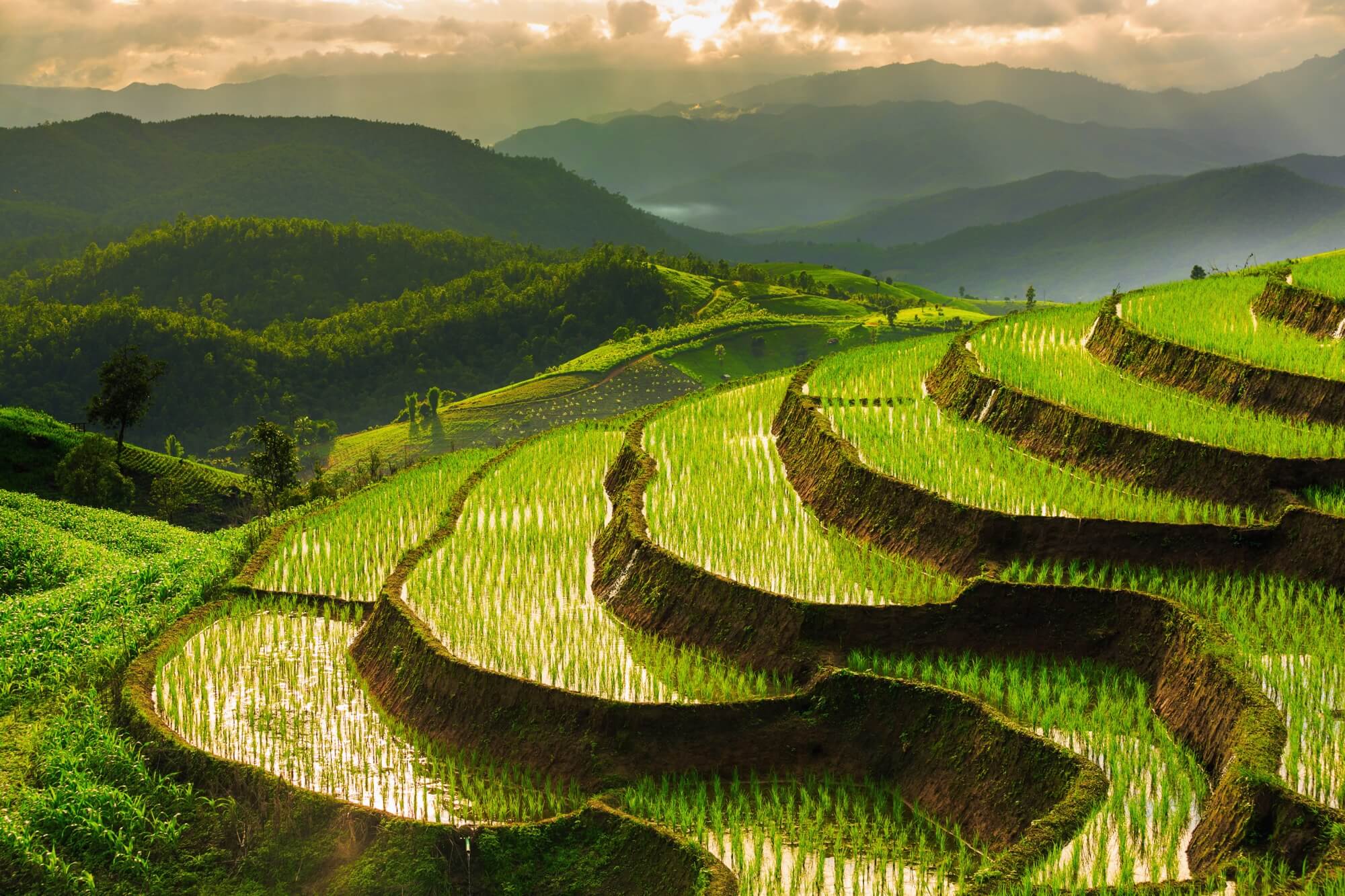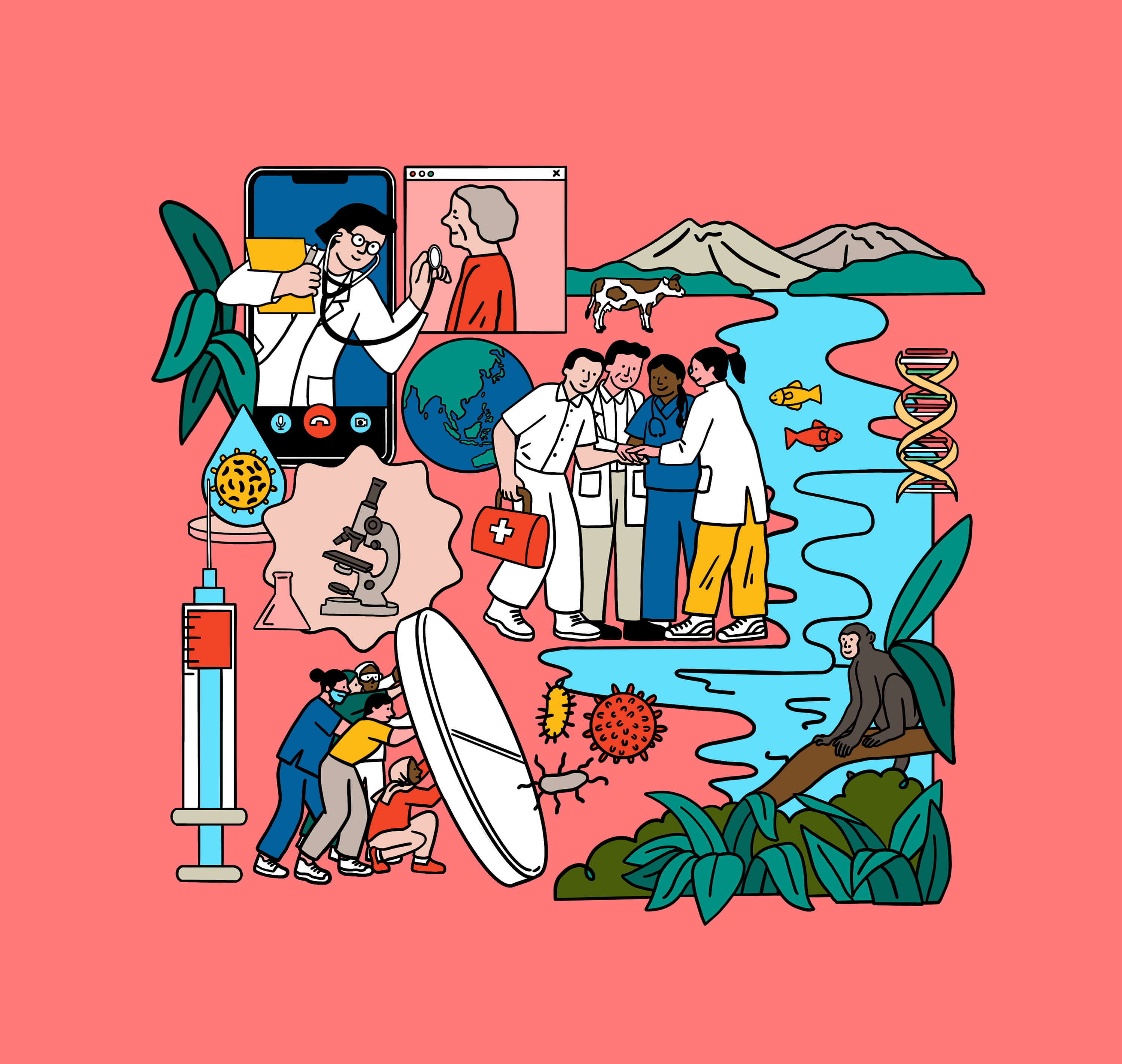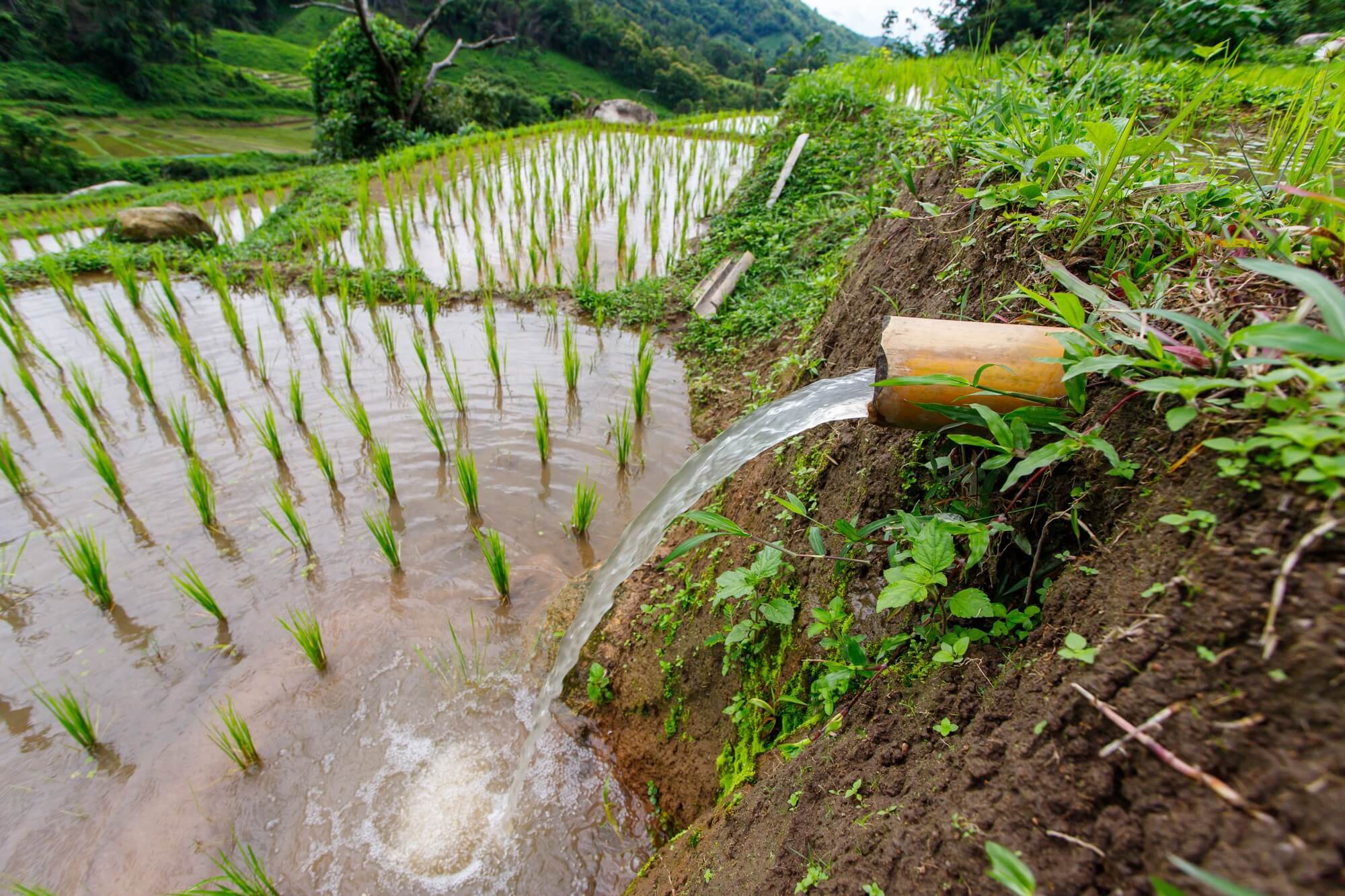






Water and sanitation management presents many challenges and opportunities in the ASEAN region. This article explores the current state of the sector and link practices rooted in traditions with policy initiatives in selected countries, shaping the sector’s present and future.
The rapid growth of the urban population in Asia and the Pacific raises the importance of a proper water and sanitation system and facilities. With the population growing almost five-fold fast over the past five decades, up to 3.4 billion people could be living in water-stressed areas of Asia by 2050 (Development Asia, 2023). This very dynamic and fast-growing region needs proper management of resources and infrastructure development commitments to address water and sanitation deficits.
Sanitation is often given less attention even though evidence shows that the presence of an appropriate infrastructure is of critical importance to human health and the economic well-being of nations. Examples from Asian countries such as Cambodia, Indonesia, the Philippines, and Viet Nam indicate a larger potential economic benefit from improved sanitation: a dollar invested in sanitation yields at least a fivefold return in increased productivity (Kelkar & KE Seetha Ram, 2019).
In the dynamic landscape of developing Asian countries, the ASEAN region stands out with its unique context, where cultural heritage and traditional practices play a significant role in water and sanitation management. Integrating these practices into modern frameworks can lead to more sustainable and inclusive solutions, as shown by countries in the region that have adopted these practices. It is crucial to address the challenges in managing water resources effectively and provide access to safe water and sanitation services for all.
Examining diverse cultural narratives surrounding water and sanitation in ASEAN countries provides a rich tapestry of insights for crafting policies that honour traditional practices while addressing contemporary water and sanitation challenges. We will examine tangible examples from Viet Nam, Thailand, Malaysia, and Indonesia. Additionally, we will showcase how India has influenced water management practices in Southeast Asian countries.
Indonesia: Subak System in Bali
In Indonesia, the Balinese society practices “Subak,” an age-old collaborative and participatory local water allocation system for irrigation (Kitaoka, 2005). Subak represents a one-of-a-kind system that is not present elsewhere in the world. Water from springs and canals flows through temples and onto the rice fields. This system involves 1200 water collectives of 50-400 farmers who work together to manage water supply from a single source. These farmers are able to carry out terraced rice farming without using pesticides or fertilisers. UNESCO recognised this sustainable system, inscribing Subak on the World Cultural Heritage list in 2012.
The Tri Hita Karana philosophy guides many aspects of Balinese culture, including the Subak system, particularly irrigation regulation, cropping patterns and soil and water conservation practices. This philosophy, which is rooted in harmony and togetherness, enables the irrigation management system to anticipate and adjust for deviations. Subak system managed water for terraced rice fields collectively. After replacement with the green revolution approach, several social and economic challenges were raised, along with other chaotic conditions in water management, but the Subak community has gradually returned to practices to restore the original wisdom concepts (Risna et al., 2022).
Viet Nam: Water Culture
The “Water Culture” in Viet Nam explains the profound cultural and societal ties between communities and water bodies. Settlements have historically been established near water sources for trade and housing, engendering a sense of familiarity through generations. The country has relied primarily on surface flows of rivers and aquifers, particularly the Red River and the Mekong River, locally known as the Hong River and Cuu Long River. To date, however, the country’s water resource usage is under pressure due to the increased demands for irrigation and urban and industrial usage with an increasing population (ODV, 2018).
Climate change concerns are impacting clean water availability in the Mekong River basin. This area accounts for around 12 per cent of the country’s entire land, producing about 40 per cent of agricultural output. The Mekong Delta Water Management for Rural Development project was implemented to protect and enhance the water resources in the provinces of Can Tho, Soc Trang, Hau Giang, An Giang, Kien Giang, Ca Mau, and Bac Lieu in the Mekong Delta region. The International Development Association (IDA) and local partners aimed to enhance the agricultural productivity of local farmers, providing access to water supply for rural households, climate change adaptation and resilience. Approximately 215,000 farming households benefited from better irrigation services, prevention of salinity intrusion, and flood risk management, enabling agricultural production on 104,864 hectares of land. From a community perspective, the project encouraged women’s participation in pest management training, enhancing their access to the agricultural sector. Additionally, the project entailed a partnership with the Women’s Union aimed at increasing women’s involvement in the sanitation campaign (The World Bank, 2019).
In areas with sizable ethnic minority populations like Soc Trang, Gia Lai, and Dien Bien provinces, water, sanitation, and hygiene (WASH) are integral aspects of community well-being. Given the low incomes of communities and problems with product quality and attributes, it is essential that existing products and services become accessible to these groups. The geographic heterogeneity of these areas raises the need for a diversified approach. For instance, whereas Soc Tang is flat and easy to reach, infrastructure investment costs are relatively lower. However, in areas such as Gia Lai and Dien Bien, high elevations and mountains raise the need for more financial support.
Culturally, water resources have been an integral part of communities’ lives, which means that prioritisation of adequate water supplies is also an opportunity for further development and investments. For example, research shows that communities have bottled water suppliers and community-managed piped water schemes to provide accessible and affordable water through pipes to their homes. In terms of sanitation, pit latrines with concrete slabs are the most used by communities in Soc Trang (Khmer) and the Thai EM group in Dien Bien, which creates an opportunity for further development, piloting, and testing of existing water-saving or dry latrine technologies to ensure that sanitation is not limited by a shortage of scarcity (UNICEF, 2023).
Thailand: Harmony between people and rivers
In Thailand, the relationship between people and rivers shows how water has been a life-sustaining source, providing staple foods like rice and fish and nurturing communities over centuries. The management of natural resources and the conservation of river ecology by the indigenous people in the Nhongchaiwan wetland highlights how indigenous people manage their natural resources, which can be a basis for policy formulation for natural resources management.
In northeast Thailand, Don Pu Ta is a sacred site for the community. The Don Pu Ta remains untouched, nestled in a massive forest, representing a close relationship between the indigenous people and the natural environment. Nhongchaiwan wetland is one notable example, as it is not only the largest Cephalanthus tetrandra freshwater swamp forest but also a place for social activities and income generation for the entire community. It highlights the importance of high recognition and inclusion of indigenous practices in the government’s policies on natural resources management in locations where representatives of local communities have been living for generations (Chunhabunyatip et al, 2018).

Malaysia: Indigenous communities
Malaysia’s approach to water preservation reflects a blend of cultural and environmental stewardship. In Malaysia, water is perceived as an enigma, manifesting itself in extreme circumstances, such as floods and droughts, meaning that water management should consider both excess water and a shortage (Weng, 2004). In times of water shortage, for example, parts of Malaysia have faced significant flood problems. Even though natural conditions causing floods have been in place, uncontrolled development activities in watershed areas as well as near river corridors lead to an increased likelihood of floods (FAO, n.d.).
The recognition of clean water as a fundamental human right, along with case studies like those involving the Orang Asli communities, underscores the social and cultural dimensions of water and sanitation in the country. Orang Asli communities make up 0.7 per cent of the population in Peninsular Malaysia and represent around 60 per cent of the population in Eastern Malaysia.
Between 2003–2007, the Orang Asli infant mortality rate was double that of the national indicator, with increased mortality due to parasitic infections. Highlighting the critical importance of clean water for safeguarding health, the Global Peace Foundation has collaborated closely with Orang Asli communities to tackle these challenges.
Interactive community engagements attended by women and children, incorporating fun elements, could raise awareness among local community members about good hygiene and the importance of handwashing. Importantly, the initiative has tangible results, such as an installed pump that draws water from wells for the Orang Asli community in Kampung Binjal, which ensures that safe water is now available near the households and local community members suffer fewer health complications like diarrhoea and fever. The availability of water has significantly improved the quality of life for women. Access to clean water contributes to their well-being, health, sanitation, and empowerment. Before, they needed to be careful with water usage due to resource scarcity, but now they can use water based on their daily needs more frequently (Rhule & Thoo, 2018).
Policy frameworks leveraging cultural practices and policies of ASEAN
Various initiatives and frameworks demonstrate ASEAN’s commitment to addressing water and sanitation issues. The ASCC Blueprint 2025 is a comprehensive planning framework designed to enhance the quality of life of ASEAN peoples through cooperative activities that are people-oriented, environmentally friendly cooperative activities, and geared towards sustainable development. Having sustainability as a key element of the strategy, ASEAN can ensure the conservation and sustainable management of biodiversity and natural resources by enhancing policy and capacity development, adopting best practices for conservation, development, and sustainable management of marine, wetlands, peatlands, biodiversity, and land and water resources; and promoting coordination within relevant sectors for enhancing access to clean land, green public space, clean air, clean and safe water, and sanitation (ASEAN Secretariat, 2016).
Released in 2005, the ASEAN Strategic Plan of Action on Water Resources Management demonstrates a structured approach to managing water resources in the region. The ASEAN Working Group formulated the action plan on Water Resources Management (AWGWRM). The need for the region to develop the water conservation programme was initially recognised in the Hanoi Plan of Action of 1999-2004, followed by two high-level meetings of AWGWRM in 2003, acknowledging the need to integrate water sector management needs with issues such as water supply, sanitation, climate, and environmental factors (ASEAN Secretariat, 2005).
Aiming to integrate the region’s unique socio-cultural context into informed policy recommendations, the ASEAN Secretariat has a dedicated Culture and Information Division (CID) that coordinates projects surrounding cultural aspects. This division collaborates with the ministries of culture of all ASEAN Member States and dialogue partners to address and promote the cultural dimension within the ASEAN framework. Furthermore, CID can also leverage its work with other divisions within the ASEAN Secretariat, notably the Environment Division, which holds the portfolio to manage collaboration with the Ministry of Environment from all ASEAN Member Countries. This multifaceted approach underscores the importance of integrating sociocultural considerations in regional dialogues and initiatives, including those related to water and sanitation. Central to these efforts is the emphasis on cross-sectoral work, which is key to ensuring a positive impact on the region.
Water management practices in India
India’s socio-cultural values in water management are well-expressed in several traditional practices. For instance, the Bamboo Drip Irrigation System has proven effective in areas with water scarcity, characterised by poor soil and rocky topography. The system enables precise water delivery to crops, eliminating unnecessary water loss.
Another example of such a system is Zabo, practised in Nagaland in north-eastern India, which consists of a protected forest land situated at the top of the hill, water-harvesting tanks in the middle, and cattle yard and paddy fields at the bottom side. Another interesting system is Oorani, which is based on the daily living aspects of villages in southern India. Every village had more than three water bodies to meet the needs of drinking, farming, cattle, and birds. Water reservoirs in the form of oranges held precisely the amount of water for irrigation of the designated few acres of land. The orange water was especially beneficial for women who usually consumed the water for household needs. Oorani system processes an exceptional balance of socioeconomic dimensions and coherent communities (Kapadia, 2016).
people towards rivers significantly influences water irrigation systems. Historically, rivers have intrinsic socio-cultural value, like with the River Ganges (Ganga), a symbol of culture and hope and is an essential source of livelihood for the Indian people. Indigenous and local communities in India have demonstrated an extensive knowledge of their local river systems development. For example, Apatani in Arunachal Pradesh illustrates a traditional ecological knowledge of sustainable river management. The Ziro Valley, situated in the Eastern State of Arunachal Pradesh and has been inhabited since the 1100s, showcases the lasting heritage of the Apatani tribe. A unique practice showcasing the deep understanding of water management, river conservation, and traditional wisdom of the Apathani tribe is paddy-cum-fish cultivation, which serves to grow rice and nurture fish in submerged fields harmoniously. Wetland rice cultivation is executed on constructed terraces, called Agher, made from bamboo and wood and designed to contain water and maintain nutrient-rich soils. Bamboo or wooden pipes transfer water between terraces for precise distribution of water resources. Additionally, 50-centimetre-deep trenches are excavated in the fields to provide shelter to fish shelter and serve as water reservoirs during dry seasons. This is a good example of how indigenous wisdom possesses valuable insights into sustainable resource management (Shinde et al., 2023).
The Southeast Asian region has had close cultural and geographical contact with India for centuries. For instance, in countries such as Cambodia, Thailand, and Indonesia, many symbolic traces of India’s influence are visible in art, culture, and civilisation. As a result, India has been a source of inspiration for art and architecture in countries of current ASEAN (Sengupta, 2017). As we can see, the knowledge from India’s water management practices finds relevance in the context of certain ASEAN countries, as it offers a means to preserve indigenous practices amidst the modern challenges of sustainable water management.
Conclusion
Several regional initiatives are addressing critical development issues of the region. However, there is a need for enhanced commitment and action within the ASEAN countries, which includes leveraging the cultural heritage and practices related to water and sanitation for informed policy decisions and initiatives to bridge the gap between policies and the real needs of local communities. The expedition through the cultural waterscapes of Viet Nam, Thailand, Malaysia, and Indonesia illuminate the intrinsic relationship between cultural heritage and water and sanitation practices. Additionally, examples from India show that indigenous wisdom holds valuable insights for sustainable resource management aligning with the practices in ASEAN countries.
The exploration explains a profound understanding that water is not merely a natural resource but an important cultural and societal aspect of society. By weaving the cultural narratives into modern water and sanitation frameworks, ASEAN countries have the potential to foster sustainable and harmonious water management practices. It is important to enhance the commitment and action towards better community engagement, incorporating traditional practices and behaviours into modern approaches towards better water usage, efficient and equitable distribution, and adopting norms and practices related to personal hygiene and sanitation. The region’s unique sense of ownership and respect for water resources can become a driving force for mobilising more investments into infrastructure, which can be translated into tangible benefits for communities.
The views and opinions expressed in this article are solely those of the author and do not reflect the official policy or position of ASEAN.







